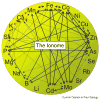Ionomics: studying the social network of mineral nutrients
- PMID: 19481970
- PMCID: PMC2701637
- DOI: 10.1016/j.pbi.2009.05.002
Ionomics: studying the social network of mineral nutrients
Abstract
The accumulation of a given element is a complex process controlled by a network of gene products critical for uptake, binding, transportation, and sequestration. Many of these genes and physiological processes affect more than one element. Therefore, to understand how elements are regulated, it is necessary to measure as many of the elements contained in a cell, tissue, or organism (the ionome) as possible. The elements that share components of their network vary depending on the species and genotype of the plants that are studied and environment they are grown in. Several recent papers describe high-throughput elemental profiling studies of how the ionome responds to the environment or explores the genetics that control the ionome. When combined with new genotyping technologies, ionomics provides a rapid way to identify genes that control elemental accumulation in plants.
Figures

References
-
- Salt DE, Baxter I, Lahner B. Ionomics and the study of the plant ionome. Annu Rev Plant Biol. 2008;59:709–733. - PubMed
-
- Delhaize E, Randall P, Wallace P, Pinkerton A. Screening Arabidopsis for mutants in mineral nutrition. Plant and Soil. 1993;155/156:131–134.
-
- Baxter IR, Vitek O, Lahner B, Muthukumar B, Borghi M, Morrissey J, Guerinot ML, Salt DE. The leaf ionome as a multivariable system to detect a plant's physiological status. Proc Natl Acad Sci U S A. 2008;105:12081–12086. - PMC - PubMed
-
The authors use 5 and 6 element signatures to detect when the plants are experiencing low Fe or P conditions. The signatures are robust enough to be used to build models that predict the physiological state of the plant.
-
- Chen Z, Shinano T, Ezawa T, Wasaki J, Kimura K, Osaki M, Zhu Y. Elemental interconnections in Lotus japonicus: a systematic study of the affects of elements additions on different natural variants. Soil Science & Plant Nutrition. 2009;55(1):91–101.
-
- Chen Z, Watanabe T, Shinano T, Okazaki K, Osaki M. Ionomic Study of Lotus japonica. New Phytol. 2008;181(4):795–801. - PubMed
-
The authors perfromed a large mutant screen in the legume Lotus Japonica and identified many interesting lines. This study demonstrates that a the ionomics approach can be used to identify interesting lines in species other than Arabidopsis.
Publication types
MeSH terms
Substances
Grants and funding
LinkOut - more resources
Full Text Sources
Medical

